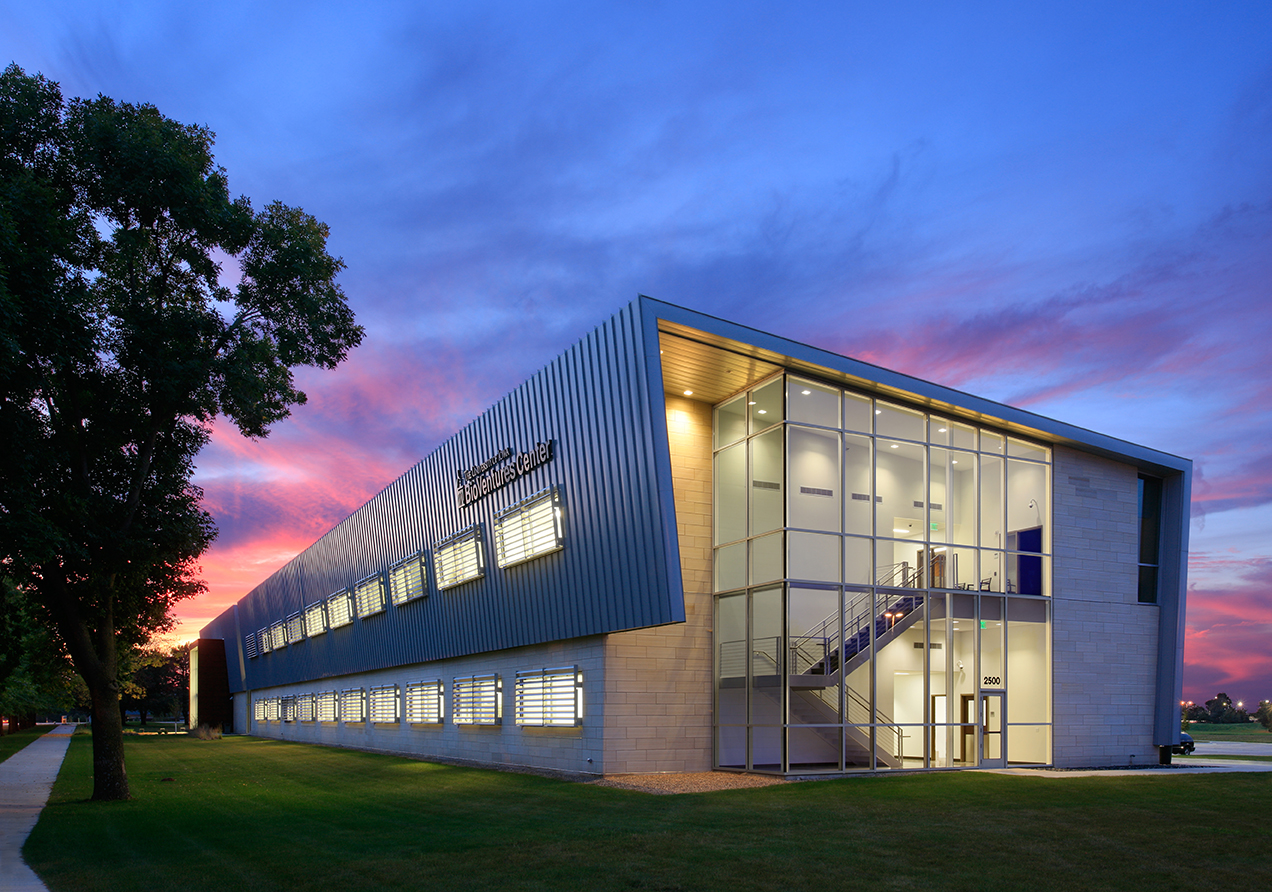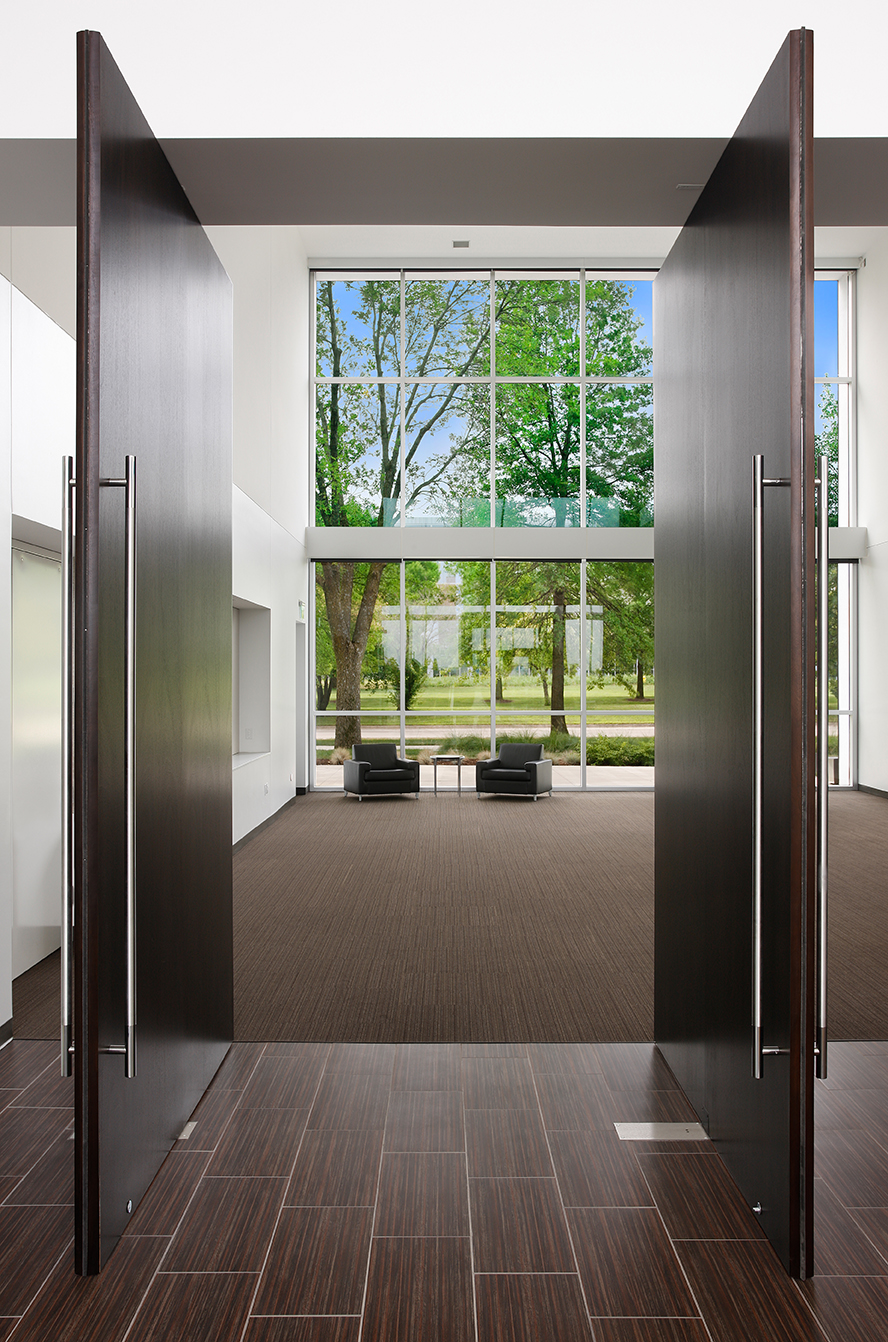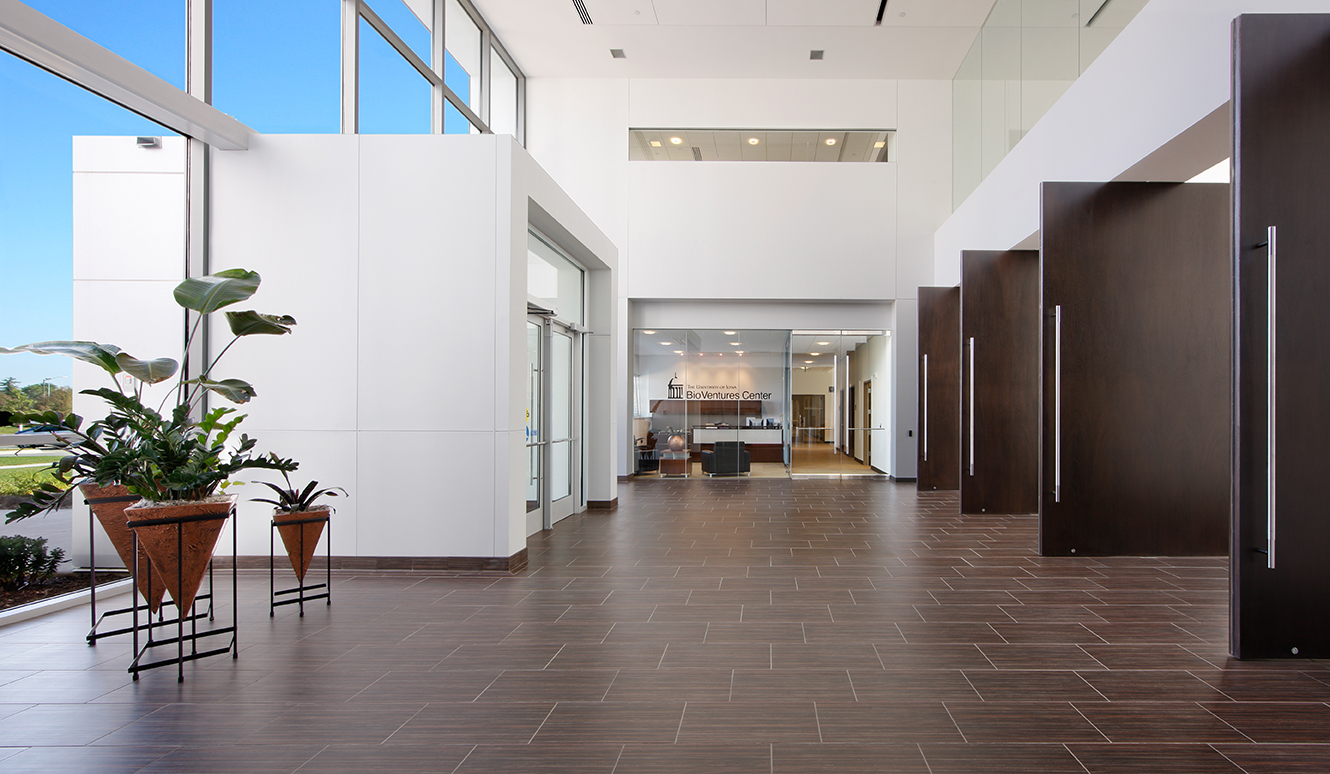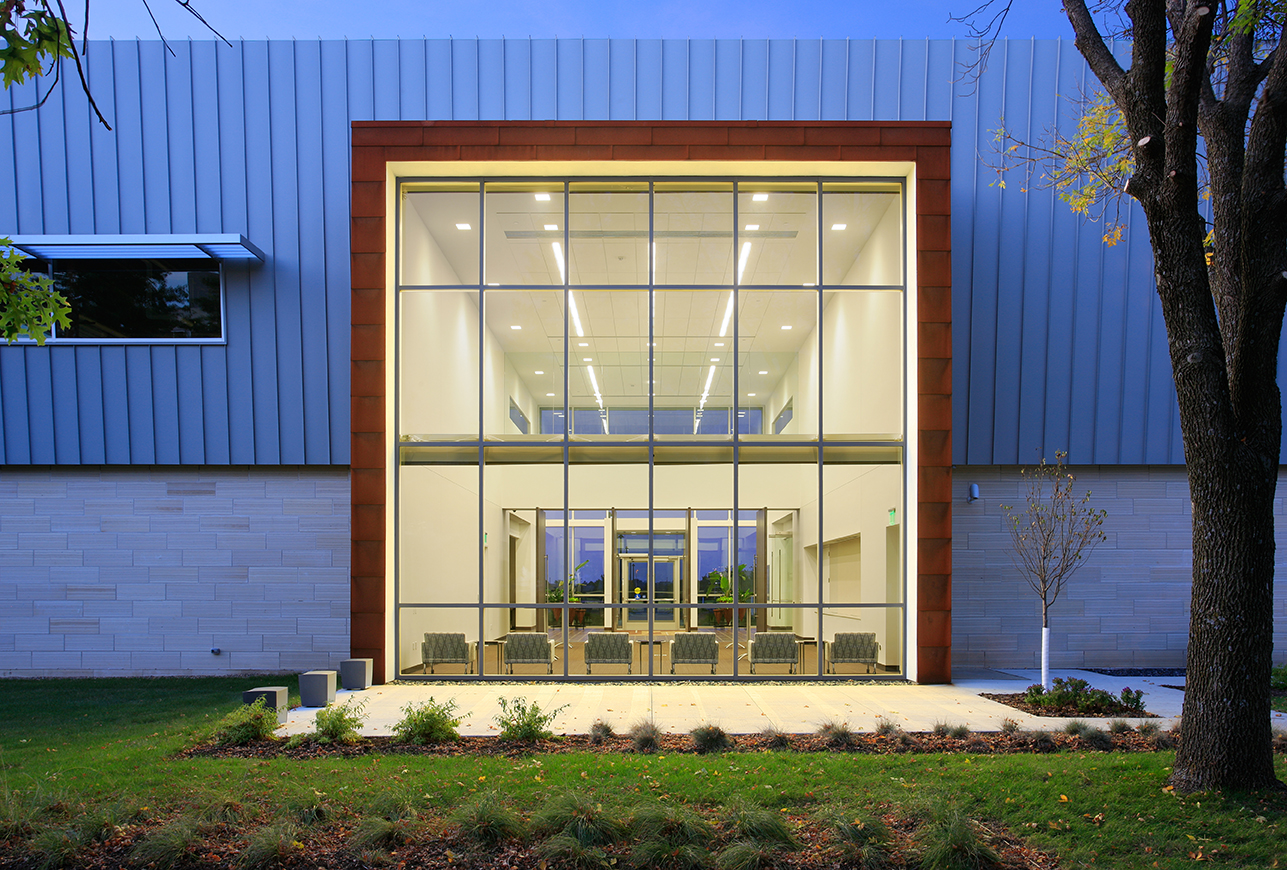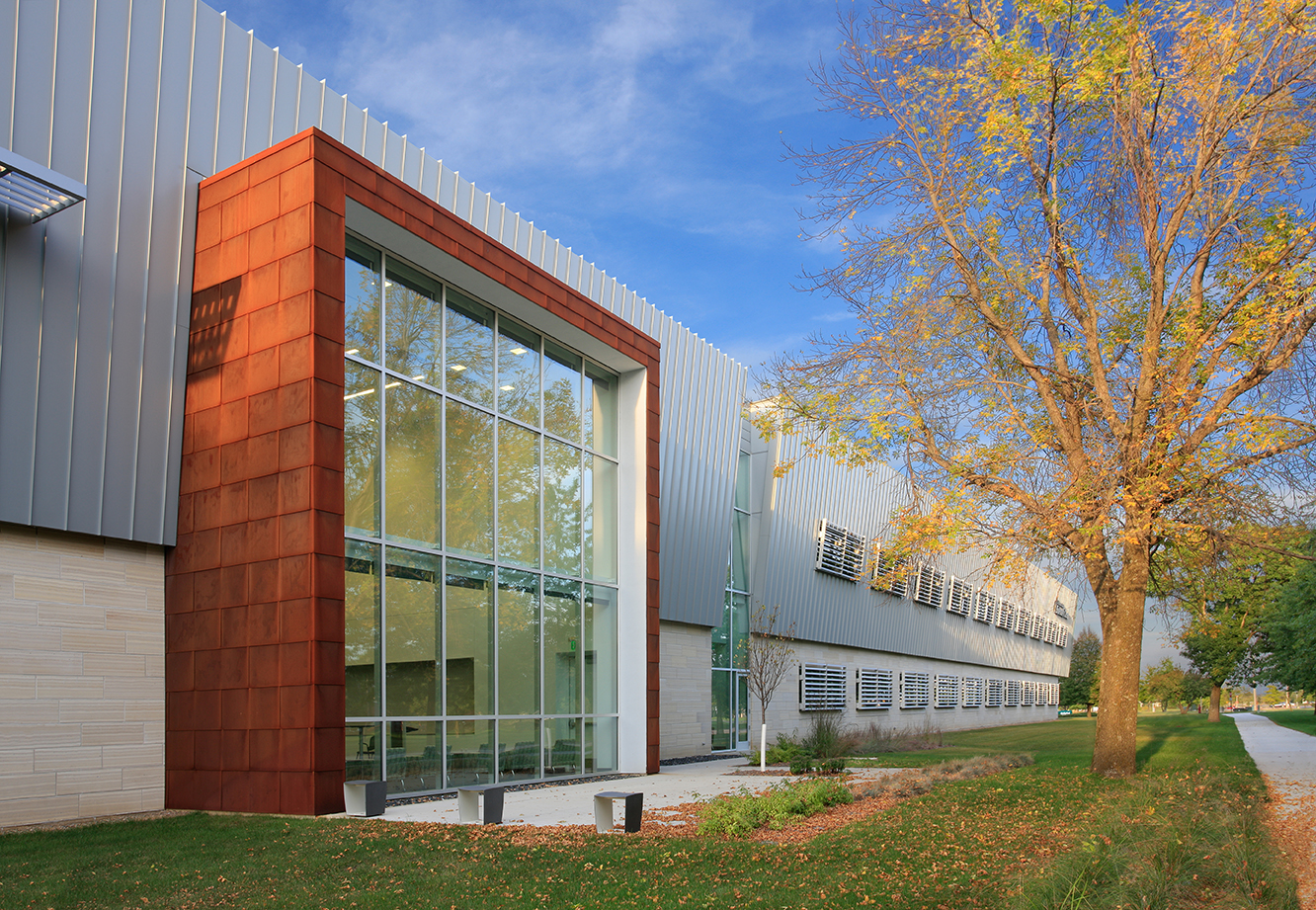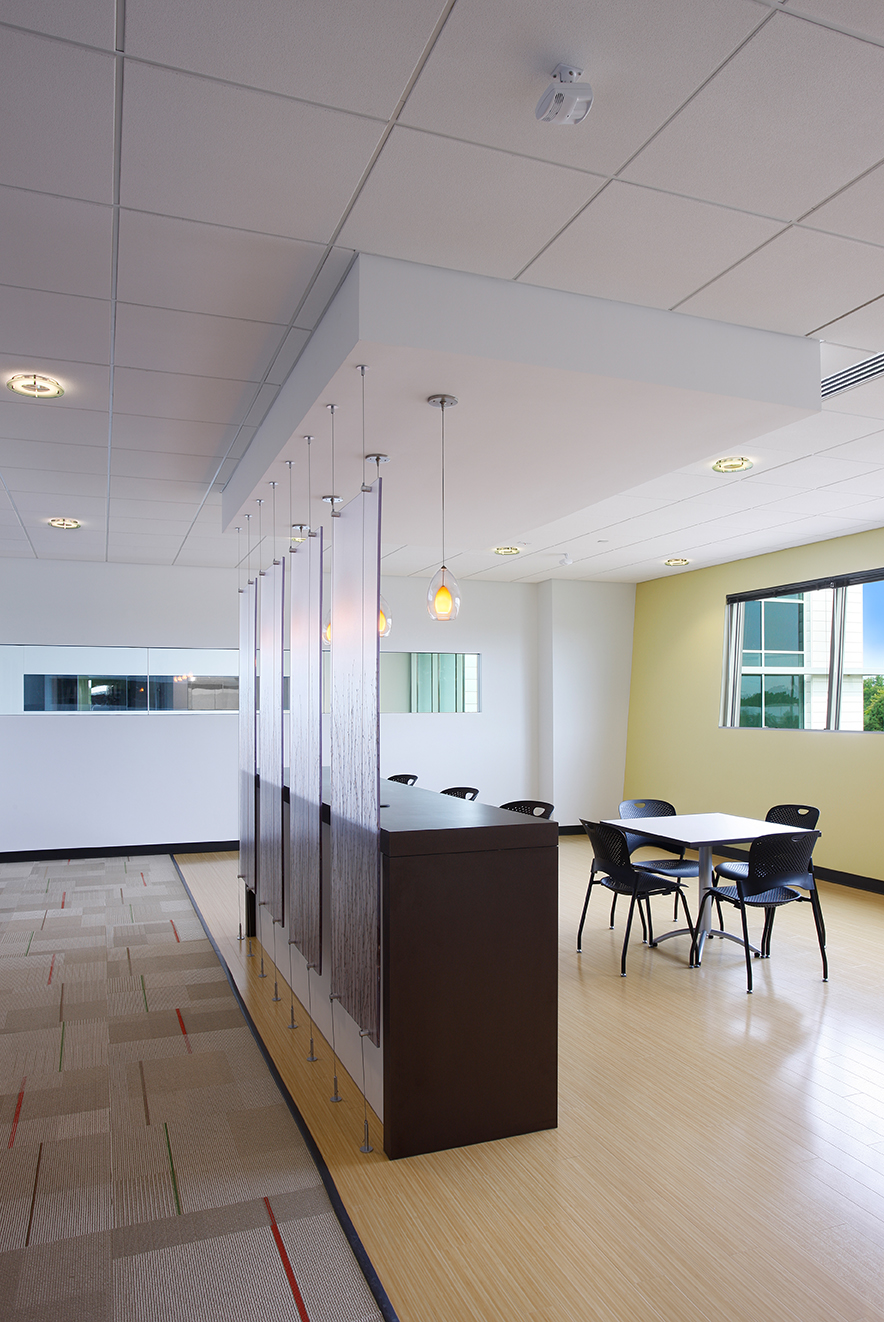University of Iowa BioVentures

-
ClientUniversity of Iowa
-
SQ. FT.80,000
-
Budget$13,191,371
-
Market
-
Year2010
BioVentures creates a collaborative environment for nascent biotechnology companies looking to grow. The facility functions as a business incubator for biotech start-ups, and includes wet lab and dry lab modules that can be leased as individual spaces or combined into larger units. Half of the 80,000-square-foot building was designed as speculative lab space and is potentially available to those businesses that start out in the incubator.
The goal for the building was to create a dynamic, highly collaborative environment that would serve as a catalyst for innovation. With this in mind, lab modules are organized along a central corridor on two levels that terminate in a transparent glass stairwell. This simple arrangement of lab modules is a logical response to the ideal depth for maximizing efficiency and daylighting.
Several common spaces are located at the center of the building and are designed to support the incubator modules. These shared spaces are critical to the success of the incubator lab model and help facilitate the growth of start-ups by promoting a sense of community and ownership. In addition to shared resources, amenities such as the lobby and the board and conference rooms allow small companies to accommodate meetings with investors and offer credibility. The lobby also adjoins a large multi-purpose room with a series of large pivot doors forming the division between the two. These doors, when open, provide the appearance of a continuous space.
The architectural aesthetic responds to a larger master plan concept for the research park which seeks to reinterpret the Midwestern vernacular through materials, rhythms, and scale. This building embodies the region’s agricultural heritage in a progressive application that also expresses the high-tech nature of the activities within.
A large portal extends continuously through the facility to be visible on both the North and South facades and creates a dramatic entrance and houses common space. This is subtly reminiscent of a traditional barn with its doors open on either end, framing views to the horizon beyond. Outlined in Corten steel, the portal also evokes the quality of a traditional weathered metal roof, common throughout the Midwest landscape.
A singular roof plane that folds over the sides of the building calls to mind the continuous roofline form of a barn and lean-to shed. Sun screens on the south facade are suggestive of slats, screens, and solid void patterns found in the rural vernacular of corn-cribs. The use of limestone for the building’s base is a direct interpretation of the limestone foundations used at farmsteads across the Midwest.

